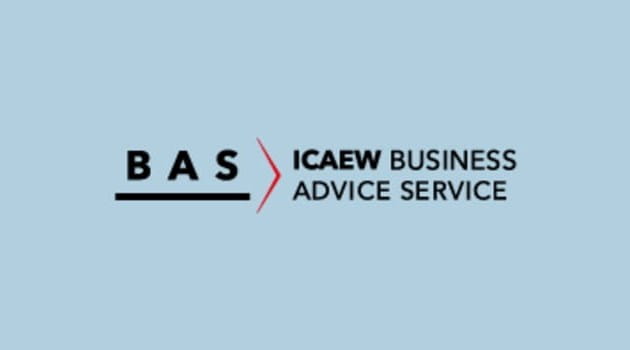You would have thought a good idea with a strong management team behind it would be a fundable proposition. And yet all the data points to there being a problem for women and ethnic minorities when it comes to getting early-stage funding. Confusingly, a good idea and energetic leadership is not always a magnet for funding.
“Venture capital funds raise the money they invest from a group of investors that are buying into a particular strategy,” says Maggie Rodriguez-Piza, Chief Executive, Funding London. “It can be difficult for those strategies to be flexible enough for venture capitalists to be able to truly invest in super early-stage businesses. Ten years ago, most investors were focused on later-stage rounds, eg Series B. Today, there is a higher proportion of investors who will look at Series A and below. The EIS tax breaks for HNW’s have been helpful in supporting this shift. One of the biggest barriers for fund managers is that if they raise the fund around a specific strategy, and they have to stick to that strategy.”
The struggle for investment is compounded by the harsh reality that investment teams invest in what they can relate to and what they can understand. She points out that 74% of investment decision-makers in venture capital firms are white, 71% are male and 30% attended the top universities.
“That is one of the key barriers,” says Rodriguez-Piza. “Until investment teams are diversified away from those numbers, and they are more representative of society as a whole, there will be propositions that will get missed.”
She points to the British Business Bank’s findings from 2017, which showed that less than 1% of all venture capital went to women founders. “It then started asking questions why, and that led to all this other work about what the people making investment decisions look like, and where they went to school. There is now a growing number of venture capital firms that are conscious that, if they have to recruit, they look at recruitment through a diversity lens to make sure that they are seeing a range of candidates,” she says.
“But that is only part of the puzzle,” she continues. “The other part is that there are ideas that are difficult to invest in because they're so new.” To accommodate new business propositions in the sustainability space, the Greater London Investment Fund has ring-fenced £14m to invest in circular economy businesses. “We are encouraging business models and products that are designed specifically for reuse and recycling of assets Investors could struggle to understand these business ideas as they are often reliant on brand new technology or different ways of looking at traditional processes, and this is where the public sector has a role in encouraging this type of activity to take off.”
Funding London takes funding from Europe and the UK and puts it in the hands of appointed fund managers to invest in sustainable and high-growth London businesses. Returns on these funds are then reinvested. Over the last 12 years, it has invested £81m via five equity and seven loan funds as part of £549m of total investment received by 711 SMEs. According to Rodriguez-Piza, approximately 8,650 jobs have been created or safeguarded through Funding London’s investments, and to date it has reinvested £9.9m of initial returns into our current funds.
‘The Greater London Investment Fund (GLIF) operates as a £100M fund of funds managed by Funding London. It supports economic growth by providing loan and equity finance to London’s SMEs through its investments in three sub-funds. MMC Ventures manage the £45m equity sub-fund, and The FSE Group manage the £55m two loan sub-funds. The GLIF and its sub-funds were launched in May 2019 by the Mayor of London. It is funded by the European Investment Bank, European Regional Development Fund, ReLondon and Funding London’ explains Rodriguez-Piza. “We are focused on those areas of investment where finance gaps are identified.”
If a venture capital firm will not invest unless they truly understand a business, and are comfortable enough with it to sit on the board and help navigate it, does that mean we are only going to see repeatable business models invested in – for example, tech marketplaces or food delivery apps? And will these investments be offered to people that all look and think like the investors they approach – or is there the prospect of a more vibrant and varied early-stage business landscape?
She explains that in the high-growth start-up world, it is not just about a smorgasbord approach to building an investment portfolio, the reality is that it is not necessarily the first company to market that is the winner, but it is the one that has perfected the concept that will grow very large – that is why venture capitalists appear to pile in.
“But things like marketplaces are really easy to understand and other concepts may not be. There’s also the question of scalability. The more niche a proposition is, the more difficult scale is going to become,” she says.
If a founder has received angel investment, has tested the hypothesis, and decided that, yes, the business is scalable if supported by more money, is it likely that they are well enough versed in what venture capitalists need to know to be able to handle the elevator pitch?
“Founders will face different challenges at each investment stage and there are a number of things that have to be right in order for you to be able to secure funding. The challenge is in finding those investors or that fund who are focused, from an investment strategy point of view, on what you're doing,” she says. “A typical venture capitalist will have anywhere between 1,000 and 2,000 business plans come across their desk every year, and they will probably invest in 10 to 15.”
What is important is that the funnel of opportunities presented to venture capital firms is as diverse as possible. “If a business is not in the funnel, they're never going to trickle down to the last 10 businesses,” she says. Funding London cannot impose rules on its fund managers to force them to invest only in very diverse teams because the funds have been delegated to them to manage, and it is fund managers’ job to pick the best propositions. “What we can say is that we want to see their net cast as wide as possible so that the funnel will capture as many female teams and diverse teams as possible so that, if their propositions are good enough, they should trickle down.”
But any change we are seeing is very slow. “One very disheartening statistic from the British Business Bank report says that if 1% of all funding available goes to women, at the current rate and if nothing accelerates, it will take 25 years for it to get to 10%,” says Rodriguez-Piza. “But I do see fund managers really making an effort to invest differently.”
She warns, however, that founders have to be patient. “Founders might meet some great funds that they might want on their shareholder list, but funders may tell them they want to see more progress and that they want to wait another year to really see whether the founder has proved the proposition,” she says. “That’s where, for example, funds like ours get involved. We are not 100% of the solution, but we may be there to invest alongside other VCs to make sure certain businesses can progress to the next level.”
Founders who are not typical of the talent that has gone before may also have some catching up to do. For example, building and being in a network is vital, delivering a proposition with confidence has to be learned if it does not come naturally, and ambition is critical – that is ambition to ask for the right level of funding to achieve scale at speed.
Insights Special: Access to finance
ICAEW Insights examines the finance options and support available to businesses, as well as the challenges they face in obtaining it.




